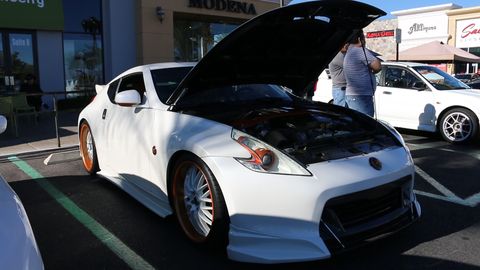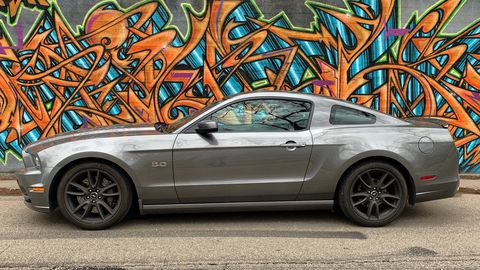Nothing says custom like slamming your car to the ground so the underbody scrapes and the huge wheels bow out in a style that’s known as “stance nation.” I’m kidding, that’s a terrible choice, but installing lowering springs on your car is a cool upgrade as long as you don’t go too far. There are some drawbacks, but with a little knowledge it can help with both looks and performance.
Let’s start with the drawbacks.
First, the ride will be stiffer. If you like the cushy ride of a midsize sedan, absorbing blows from bumps and potholes, lowering springs are not for you. There’s less suspension travel, and you might even notice increased road noise because, well, you’re closer to the roads.
Speaking of, if you’re often on dirt, rutty roads or washboard roads, a lowered suspension won’t do you any favors. You’ll feel every bit of gravel and each broken tree branch.
Lowering springs also change the geometry of your wheel/tire fitment. If it’s not done right, you can expect both accelerated and uneven tire wear. Your car could also bottom out over speed bumps and be even tougher to get up inclines, like your driveway, without scraping your bumper. If you go too low, your tires can also rub the inner fenders around corners.
Two final points: tow trucks and jacks. If you’ve ever seen a lowered car get towed by anything but a flatbed, the front or rear usually drags along the ground because the angle is too steep for a lowered car. Second, a standard floor jack sometimes won’t fit under the bodywork. That’s something you need to check before you get a flat tire.
OK, that’s a lot of cons, but done properly, there are a bunch of pros that I would say—I’ve lowered several cars in my day, including my current 2014 Mustang GT—make it totally worth it.
First, contrary to popular belief, you can you use your stock shocks under lowering springs, as long as the drop isn’t too severe (Tire Rack recommends about an inch of drop). Same thing with alignment; if you don’t drop your car to the ground, you won’t have a ton of extra tire wear—there might be some—and you shouldn’t need an alignment, though it doesn’t hurt to get one.
Also, a lowered car just looks better. My Mustang had about 3 inches of wheel well space from the factory, and with my 1.25-inch or so drop, the wheels just look more tucked in. Lowering springs also lower your center of gravity, making for better handling. Your car won’t lean as much in corners, or when accelerating or braking, meaning more of that tire force is used for turning, going and stopping.
It also reduces wind drag. There’s less air hitting the tires and less flowing under your car and getting caught up in all of the pockets and spaces. I don’t think you’ll see a mileage improvement, but I can’t guarantee you won’t.
Lastly, with stiffer springs, there’s less interference blocking the road feel from your hand. My old Saturn—yes, I lowered a Saturn—gained a ton of steering feel after the new springs were installed. It didn’t make it a race car, but it vastly improved (increased) road feel.
Lowering springs aren’t for everyone, certainly, but for the enthusiast, the benefits outweigh the drawbacks by far. As for installation, springs are somewhere in the middle. I’ve done a few sets, and you do have to use a spring compressor, which is always dangerous, but other than that it’s usually a straightforward procedure. Just watch a few videos on YouTube, wear eye protection, get the proper tools and enjoy your subtly improved—and cooler-looking—ride.
Source: Read Full Article



